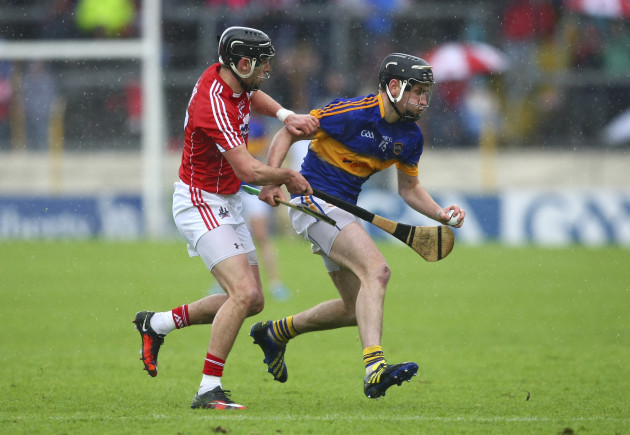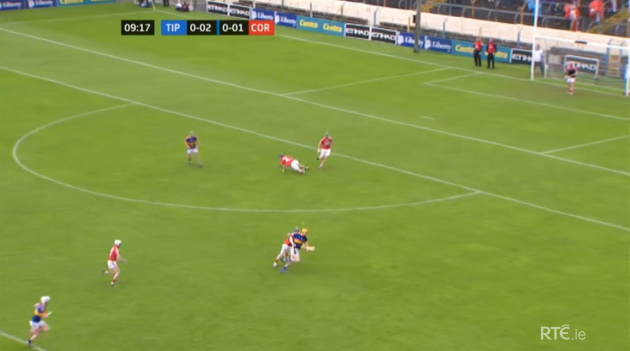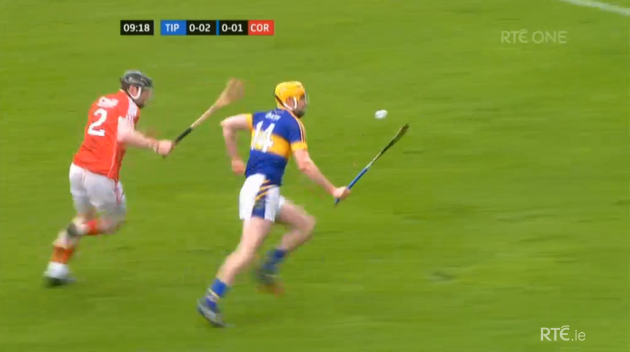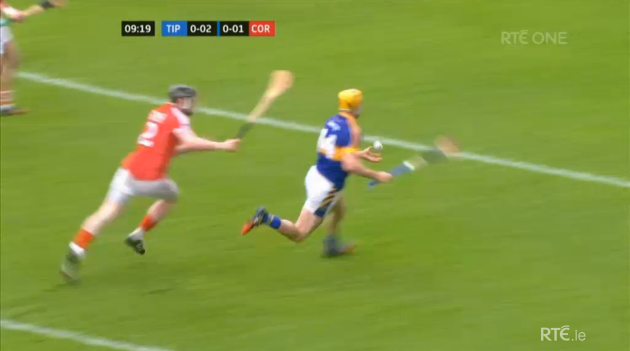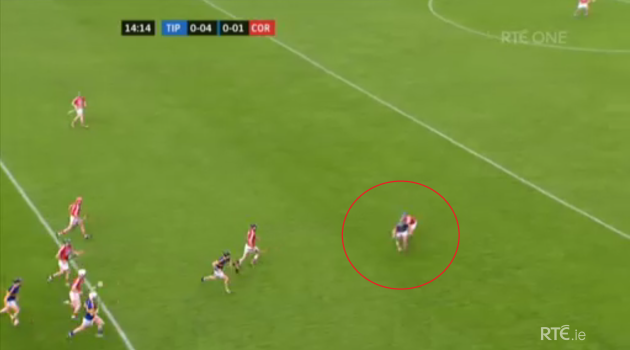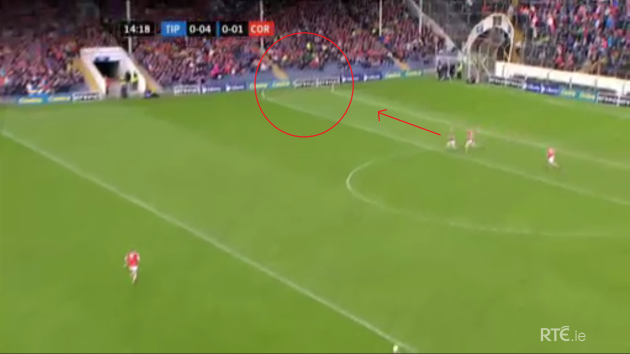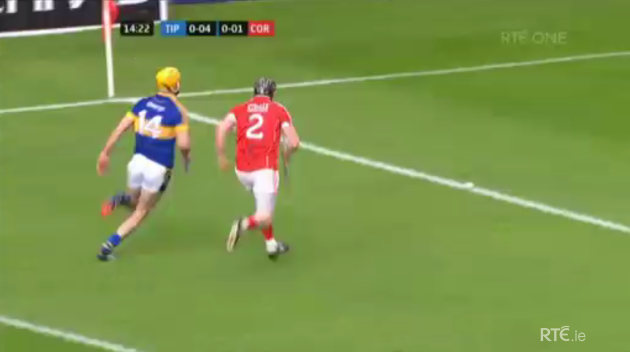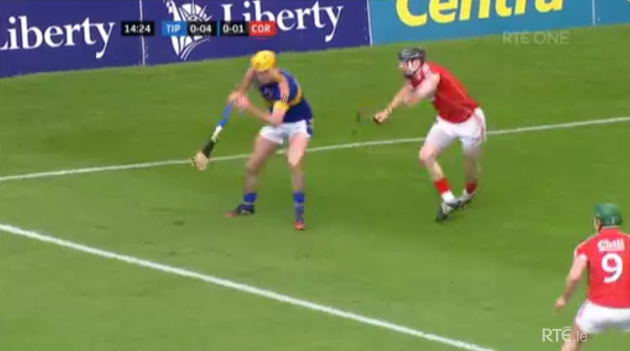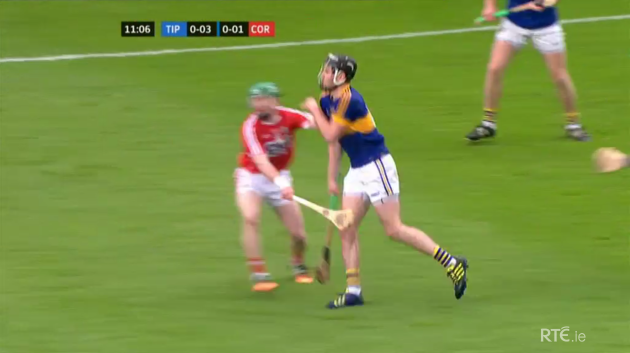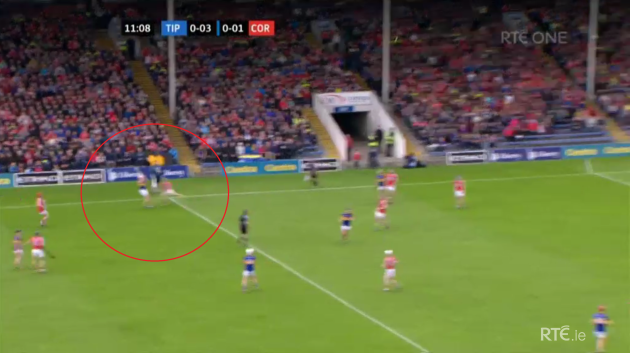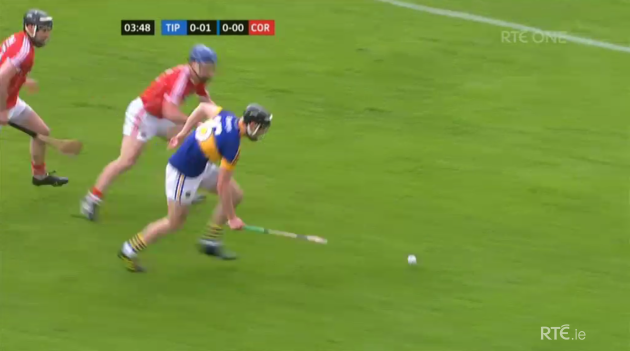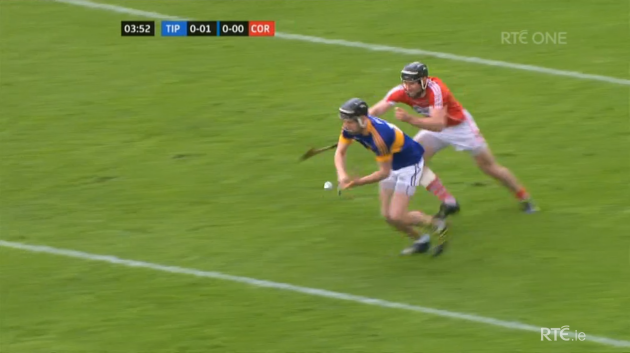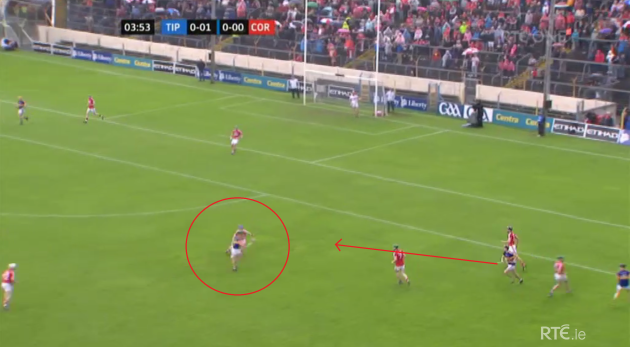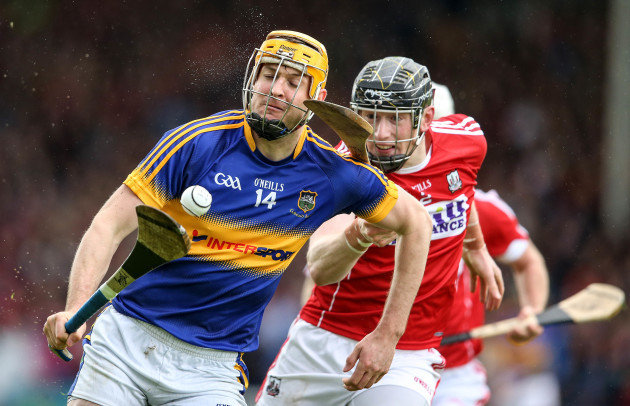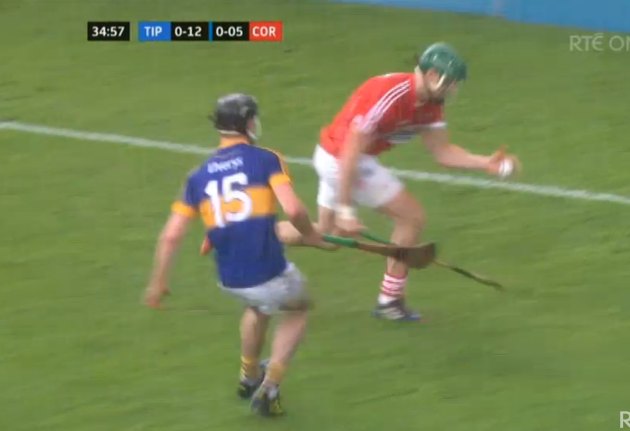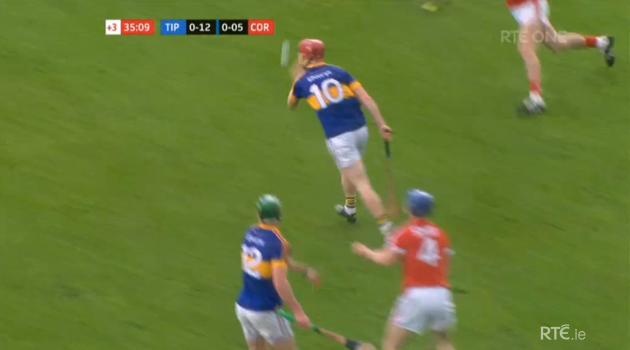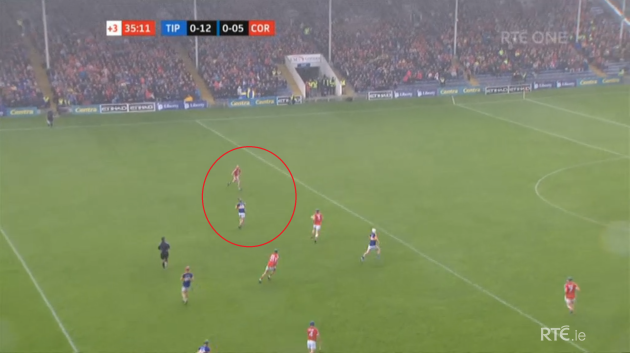AS PART OF our 2016 Hurling championship coverage, we’ve enlisted the expertise of Tipperary’s 2001 All-Ireland winning captain and former team coach Tommy Dunne.
Tommy has joined The42 for the summer and starts today by taking a closer look at Tipperary’s victory over Cork in last Sunday’s Munster SHC quarter-final at Semple Stadium.
**************************
THE FIRST THING to say, from a Tipp perspective, was that this was a very solid performance, really efficient and clinical.
If you’re in Michael Ryan’s shoes, you deserve a lot of credit, mainly in terms of team selection.
There would have been surprise at the inclusion of four debutants and if you’re outside the camp, you’d have known little about them.
It was a gutsy move by management to hand these fellas a start, no matter how well they’re going in training.
It paid off on a couple of different levels from management’s point of view and creates a hugely positive dynamic within the squad.
The message is clear: if you’re training well, there’s a chance you’re going to get rewarded and Michael has no problem leaving off more established guys if your form is good enough in training.
That should really benefit the entire panel but you have to take into account that there will be sterner tests for Tipp to overcome.
Now, I’ll take a more in-depth look at the main contributory factors in Tipperary’s victory, and Cork’s poor display.
Cork’s defensive malfunction
Cork set up with William Egan sitting very deep. My take on this is that it wasn’t actually a sweeper system at all.
Egan was actually there to prevent goals being scored by Tipp’s inside forwards but he offered no relief to Cork’s full-back or half-back lines, which is essentially the job that the sweeper is there to fulfil.
He offered a screen in front of goalkeeper Anthony Nash and if Seamus Callanan or John McGrath got inside, Egan was going to be in a position to stop them attacking the Cork goal.
From a Cork point of view, he was effective in the sense that there were no clear goal chances but Tipp picked them off with points from outside.
Cork didn’t have a plan to deal with the long-range shooters and that left Egan effectively redundant.
I can only deduce that Egan was told to hold his position in case one of the Tipp inside forwards broke the first tackle and he was going to be there to rule out a one-on-one with Nash.
But there was no positive defensive effect to having him there. In fairness to the Tipp players outside, the quality of ball going in was good and they had obviously expected Cork to set up how they did.
However, a proper sweeper would be covering those angled balls, ensuring that they didn’t find their intended targets.
Tipp kept it narrow inside so there was space in the outside channels to exploit.
A prime example of this was Seamus Callanan’s first point from play, resulting from a diagonal cross-field ball from Brendan Maher.
Seamus gained possession, wriggled clear of his marker Damien Cahalane and flashed over a point.
It was a terrific ball that allowed Seamus time to take it on the run, turn his man and pop it over.
The precedent was set there and then as to how Tipp wanted to pick Cork off, by dragging their defenders into uncomfortable positions.
Seamus then scored that superb point from the touchline, with Cahalane trailing in his wake once again.
The first picture above shows John O’Dwyer gaining possession before he flashes a diagonal ball to the opposite wing. Seamus gives chase but as you can see, still has work to do against Cahalane.
A fair shoulder charge allows Seamus to gain possession and while he feinted as if he was going to play a ball across the face of goal, he shot over the bar from an incredible angle.
Seamus needed a couple of touches to get the ball into his hand but there was no second Cork player coming into that contact area and after winning that first tussle, Seamus had the advantage.
Egan was the extra defensive player but it seemed quite clear that he wasn’t asked to move towards the touchlines to provide added cover.
In many ways, Egan was caught between a rock and a hard place. His defensive instinct in the above example was surely telling him to move across and help out Cahalane but he was under instruction to prevent goals and to stay close to Nash.
John McGrath’s influence
Tipp’s overall touch, accuracy, organisation and work-ethic was really, really good.
They hit 22 points and went about their business very well, although Cork didn’t apply any great pressure to Tipp players on the ball.
Tipp, when they had possession, were still very good with it. There was that lovely pass from Pádraic Maher to Sean Curran in the first half, when Pádraic took an extra moment or two to compose himself before taking the right option.
John McGrath was a prime example of a player using his head. He made 18 plays during the game and when you consider that Cork forwards Patrick Horgan, Conor Lehane and Seamus Harnedy made just 21 plays between them, it’s a big statistic.
When the Cork defenders got their tackles in, Tipp’s ball retention was very good. They were able to break tackles and lay the ball off to a better-placed team-mate. Brendan Maher’s early point was a really good example of this, when he profited from John McGrath’s good work.
In the sequence, John is surrounded by Cork defenders when he gains possession but he manages to get free and pops off a pass to Brendan, who has time and space to put the ball over the bar from the New Stand side of the field.
That score put Tipp 0-4 to 0-1 ahead but John also played a key role in Tipp’s second points, scored by ‘Bubbles’ O’Dwyer, as the sequence below illustrates.
John feints as if he’s about to make a run down the right touchline but he checks inside, turns back and feeds Bubbles for the score. It might look simple but it requires game intelligence and composure in equal measure.
What John McGrath, Sean Curran and Dan McCormack were really good at on Sunday was drawing Cork defenders into a ruck, holding the ball for just the right length of time and then laying it off to a team-mate in space. As I say, it might look easy but it requires a lot of work to execute correctly.
Tipp’s game management
Tipp got themselves into a position where they led by 0-14 to 0-5 at half-time, and that gap stretched out to 11 points, 0-16 to 0-5, early in the second half.
From there, Tipp were able to keep Cork at arm’s length and it was a task that was quite easy because Cork didn’t change their approach.
Brendan Maher and Michael Breen ruled the roost at midfield and the Maher brothers, Ronan and Pádraic, were very comfortable in the half-back line.
Tipp dominated the key areas and I also noticed that the ‘spare man’ was an interchangeable role. Pádraic played it, so did Ronan, as did Seamus Kennedy. There was even an occasion when James Barry filled into that hole and all of the players that went in there were comfortable.
Again, Tipp were very well-organised but they had a fair idea of what was coming from Cork and that allowed them to tailor a game-plan that ultimately proved successful.
The real key factor in this game from a Cork viewpoint was keeping Seamus Callanan quiet. That was their big strategy and as I’ve discussed above, they went with Damien Cahalane man-marking him, and with Egan sitting very deep.
But that strategy was rendered null and void when Callanan scored his first point from play, as discussed above. Cahalane was left one-on-one with Seamus on the Old Stand touchline and after gaining the space he needed, Seamus flashed the ball over the bar, with the ‘sweeper’, a misnomer in my view, marked absent.
Callanan now had that early exchange in his favour and that’s a huge thing for a key player.
It was a very good ball but in truth, not much more than 50-50 in Callanan’s favour, slightly in his favour. Cahalane was tight on Seamus but Tipp went for the jugular early in terms of getting him into the game.
The idea, if you were in Cork’s shoes, was to attack Callanan and win those early exchanges with him, get on top of him physically and mentally but the reality was that Tipp turned it around and did it to Cork instead. The message was: ‘you’re targeting our main man but rather than bypass him, we’re going to feed him.’
Conclusion
The game was won and lost in the first half. There wasn’t any game-changing event after that. The key period for Tipp was coming into half-time when Tipp were seven points clear and moved nine ahead by the interval.
Bubbles picked off a point in the first minute of stoppage time but not for the first time, Cork were the architects of their own downfall as the basics failed them.
Not only were Cork guilty of gifting Tipperary possession time and time again, but the fact they were doing that meant that the supply of ball going into the likes of Horgan, Harnedy and Lehane was poor.
They tried to build from the back but what they were trying to do was utterly ridiculous.
The Bubbles score I’ve just mentioned illustrates my point. William Egan gained possession on his own end-line before transferring a pass to Mark Ellis, who then attempted a 30-metre pass to Conor O’Sullivan coming out of defence.
O’Sullivan fails to gather at the first attempt, picks the ball but then Cork cough up possession as a basic handpass to Ellis, who has now moved forward, goes astray.
Sean Curran is quickly on the scene, pops a simple pass to Bubbles and he slots it over. A catalogue of errors from Cork and within 17 seconds of Egan getting the ball in his hand, Tipp had the ball over the bar.
Conditions didn’t accommodate what Cork were trying to do. The point I’m making in relation to the Cork forwards is that while, sure, it wasn’t a good day at the office for them, they weren’t helped by what was happening at the other end of the field.
It should also be said, however, that the Cork forwards weren’t able to win their exchanges against Tipp’s defenders, and they’re going to come under the microscope from that point of view.
Tipp’s defensive game was solid as a rock but a player like Patrick Horgan, in particular, needs good quality ball.
Seamus Harnedy is well able to fight for his own possession but he too likes the ball put into space where he can break from the centre and do damage from there.
To sum up, there were a number of key factors that influenced the end result, as I’ve outlined.
Tipp were good but Cork didn’t help themselves by using a defensive system that simply didn’t work, while also falling down in some of the fundamental aspects of their play.
When you strip it all back, Tipp controlled the game pretty much from start to finish, but they didn’t have to be anywhere near full throttle to get the job done.
The42 is on Snapchat! Tap the button below on your phone to add!
